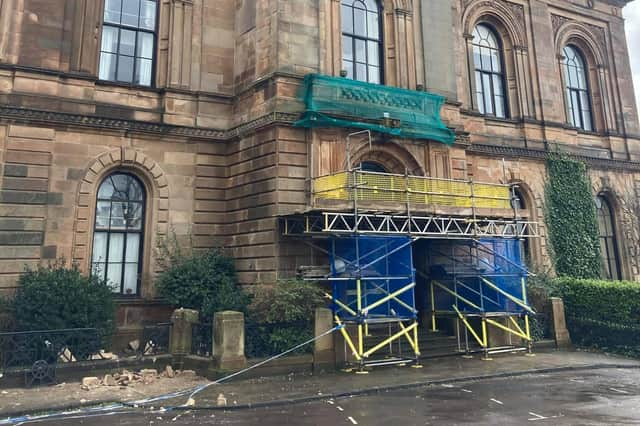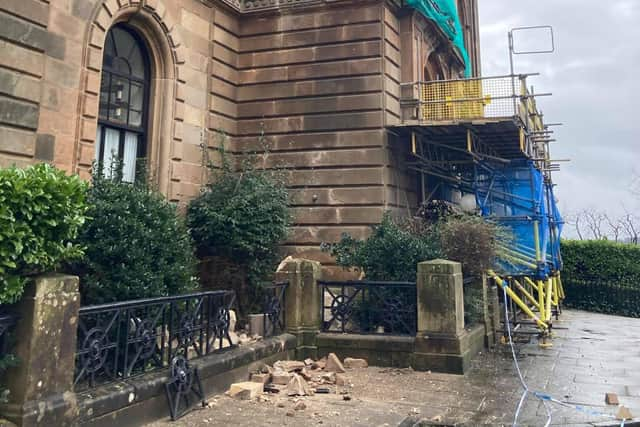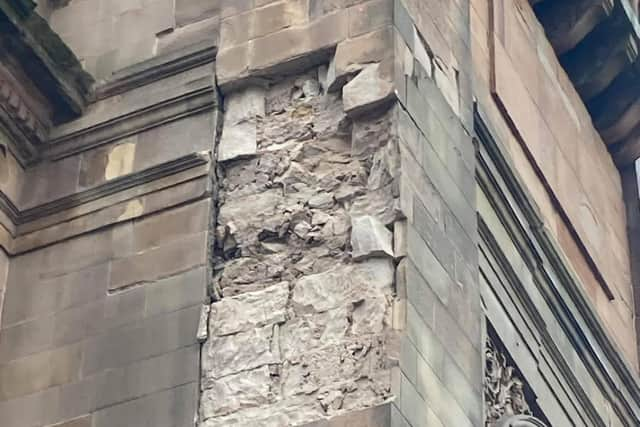Report warned of "immediate" danger from crumbling Glasgow tower last year


Police were called to the old Trinity College in the city’s Park Circus area late on Sunday after crumbling stonework came crashing down on the pavement below.
A cordon has now been erected around the building in a bid to protect passersby from falling rubble.
Advertisement
Hide AdAdvertisement
Hide AdBuilt in the 1850s, the building was once a training centre for Church of Scotland ministers.
The premises was refurbished and opened as a private residential block named Trinity House in 1986.
But weathering and inadequate previous repair works have caused major stresses to stonework and parts of the building are now in a perilous condition.
It is now due to undergo a major refurbishment, including a scheme to stabilise its iconic tower.
A detailed survey outlining the scale of works required was produced for residents last spring.


Photographs in the report, by Glasgow-based architects G D Lodge, show dramatic cracks and structural defects.
The report warns: “Without immediate structural intervention the tower is likely to become structurally unsafe in an unacceptably short time frame.”
It states that most of the living accommodation is in a reasonable state but there is “great concern about the condition of the western tower, which has been in a state of decline for a number of decades”.
Advertisement
Hide AdAdvertisement
Hide AdIt highlights movement of the walls, which are pulling apart and in danger of falling down.


The report states: "There is concern that the present condition of the tower poses an immediate risk to residents and members of the public from falling masonry.”
It also notes previous collapses, with known incidences of brickwork breaking off in December 2019 and April 2020.
It continues: “There is also concern over the state of the historic indents, which continue to delaminate and pull away from the building.”
Council officials are holding urgent meetings with experts from Glasgow City Heritage Trust to discuss a way forward for the 160-year-old building.
A spokesman for Glasgow City Council said engineers had installed fencing “to create an exclusion zone around the affected area” and scaffolding was currently being erected at the property.
Nicolson Accountancy, which has an office in the building, was contacted but declined to comment.
Trinity College was designed by Charles Wilson, the same architect who planned most of the elite Park district during the mid-19th century.
Advertisement
Hide AdAdvertisement
Hide AdTrinity House has its own residents’ association, with 21 owners who are responsible for repairs and maintenance of the building.
Planning consent for the refurbishment project, which included dismantling parts of the tower brick by brick and rebuilding it, was granted in December last year.
Repair works are due to be carried out in two phases over the next few years.
The first phase involves structural stabilisation of the tower, including the fitting of permanent internal steel bracing to hold the walls together.
The second stage will focus on repairs to the damaged stonework and protecting against future deterioration.